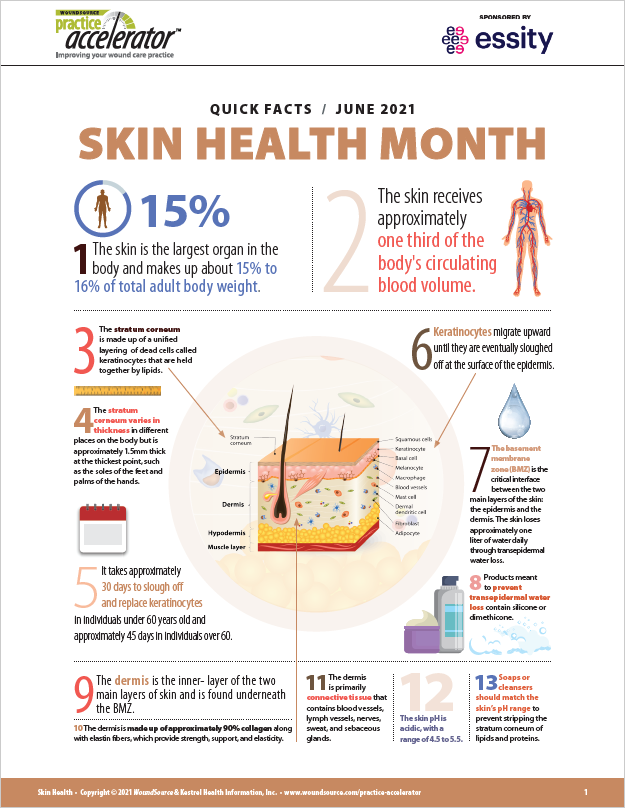
Skin Microbiome
JUNE IS SKIN MICROBIOME MONTH For this month's WoundSource Practice Accelerator series, we are providing education on a variety of topics related to managing the skin microbiome in your patients. Scroll below to read this month's white paper and articles, to print out our quick fact sheet, and to sign up for this month's webinar.
Upcoming Webinar
Skin Care Management in Clinically Challenging Populations
Tuesday, June 29Kimberly LeBlanc PhD, RN, NSWOC, WOCC (C), FCAN
Moisture-related skin damage poses a significant challenge to clinicians across the continuum of care. Development of moisture-related skin damage can lead to serious complications including infection and pressure injury. This session will focus on strategies to maintain skin integrity and addressing skin care needs as they relate to moisture management in populations including bariatric patients, pediatrics, paraplegics, and older adults. At the end of this session the learner will be able to:
- Discuss risk factors for alteration of skin integrity related to moisture among high-risk patients
- Describe prevention and management strategies for moisture-related skin damage among high risk
White Paper
Optimizing the Health of Your Patient's Skin
An evidence-based approach to a successful skin care regimen must be built on a thorough understanding of skin anatomy and physiology. Prevention of skin breakdown begins with appropriate procedures and products to keep the skin healthy, including moisture management in patients with incontinence. This white paper provides an overview of skin structure and function, including the skin biome, and describes the essential elements of skin care. Risk factors and preventive strategies for moisture...Fact Sheet
Quick Facts - Skin Microbiome
The skin, the largest organ of the body, makes up about 15% of adult body weight. When moisture is balanced and the skin microclimate is healthy, the skin can prevent infection, reduce inflammation, and protect from environmental aggressors. Wound care professionals should assess patients for the risk of moisture-associated skin damage (MASD) or incontinence-associated dermatitis (IAD). Good skin care and specific preventive strategies are essential elements of the care plan in patients at risk ...Featured Articles
Preventing Moisture-Associated Skin Damage
The outer layer of the skin, the epidermis, is the body's physical barrier to the environment. This barrier is compromised when moisture or trauma damages the epidermis. Frequently, moisture or adhesives can damage the skin and cause painful injuries. The damaged area is then more susceptible to inf...
Read MoreWhat Is the Skin Microbiome?
Human skin is home to many types of bacteria, fungi, and viruses that compose the skin microbiota or microbiome. As with microorganisms in the gut, these organisms have an important role in protecting from pathogens and breaking down natural products. The sheer quantity of life found in the skin mic...
Read MoreManaging Your Patient’s Microclimate
Vulnerable skin within the skin microclimate is caused by a multitude of factors that are often aggravated by one another. Urine and feces, for example, have a negative impact on the skin as a result of the microorganisms and enzymes they contain. These factors break down the skin barrier and cause ...
Read MoreThe Effects of Incontinence on Your Patients’ Skin
Urinary incontinence is a relatively common condition marked by loss of control of the bladder. In severe cases, it can have a detrimental impact on the quality of life of patients with this condition. Because of the sensitive and embarrassing nature of the topic, urinary incontinence tends to be un...
Read More









